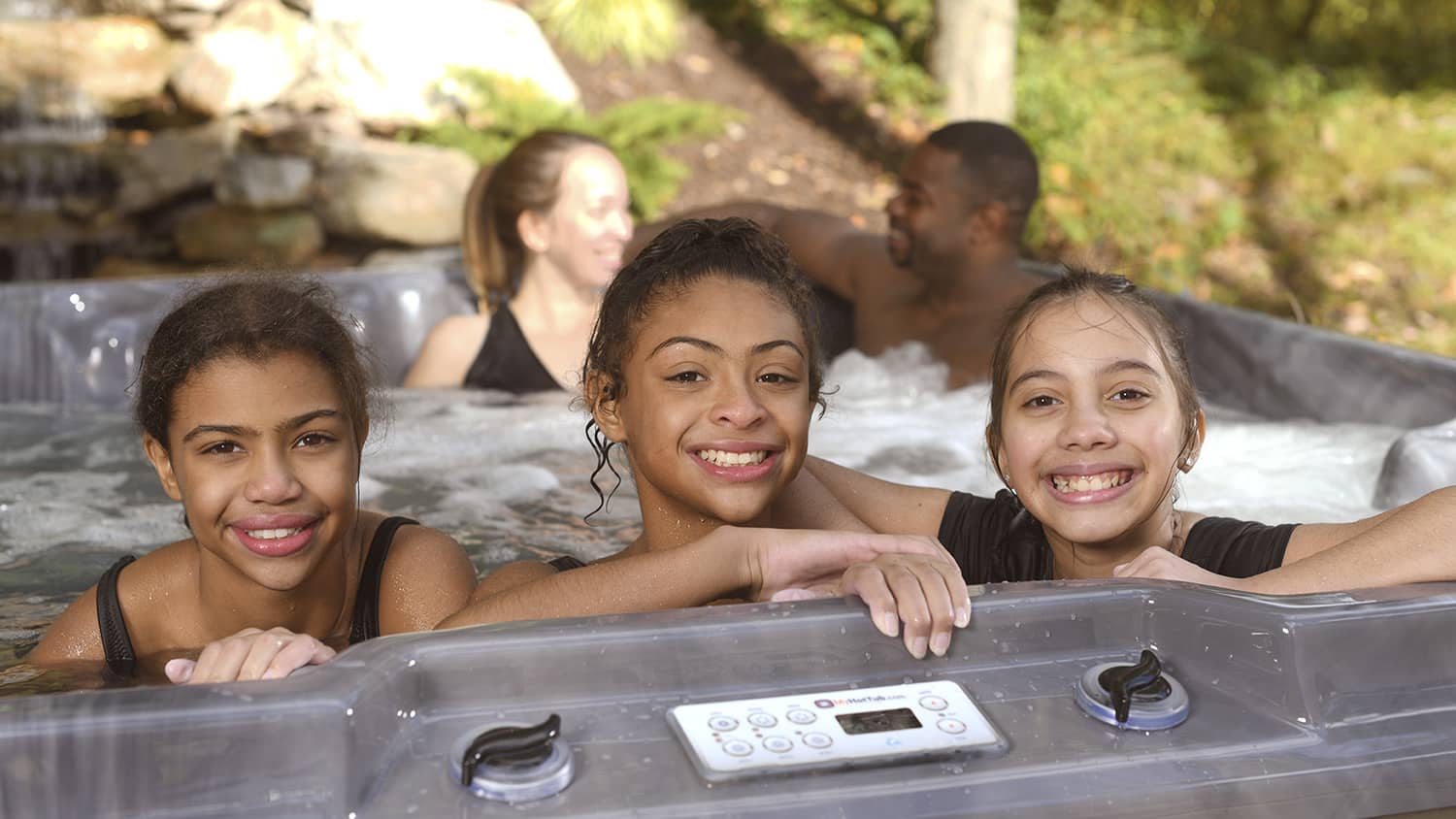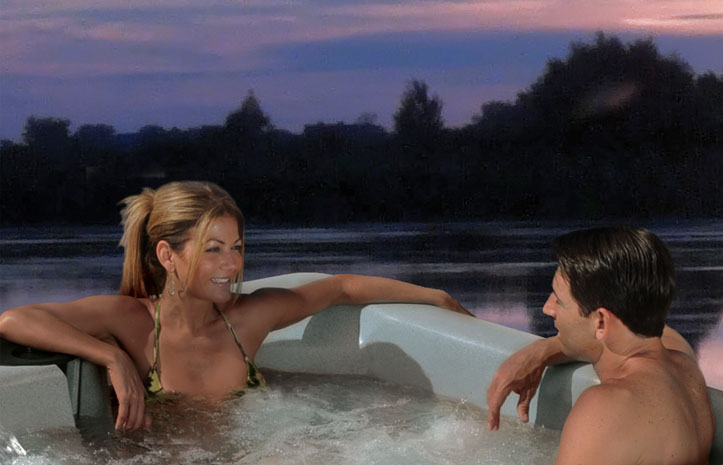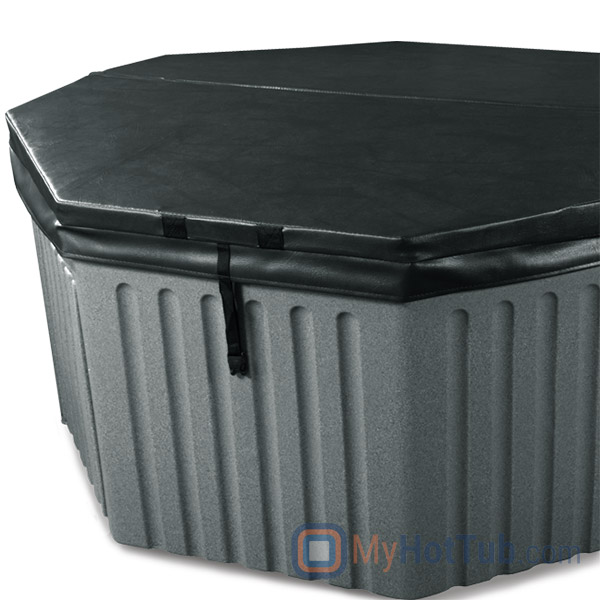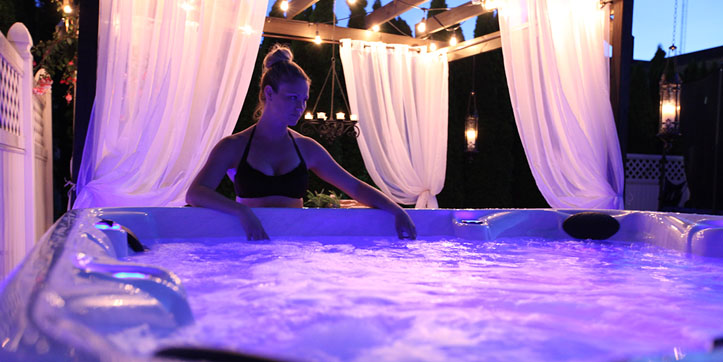
120 Volt versus 240 Volt
Most full-size hot tubs are designed for 240 Volt electrical service. These hot tub wiring systems require a 40 to 60 Amp breaker and must be specially hardwired by a licensed electrician. Some smaller hot tubs, usually with only one pump and fewer jets, include a factory installed cord which incorporates a 120-volt ground fault circuit interrupter (GFCI). This enables you to essentially plug them into a dedicated standard outlet. Referred to as “plug and play,” these models can also be converted to a 240V electrical service in the future, if desired.
About 120 Volt Connections
While plug and play hot tubs offer Day One convenience, they often lack in features. 120V spa units are usually only available with one pump. Additionally, heat up and recovery time may take longer with 120V hot tubs. Hot tubs operating on 120V service cannot have the pump operate on high speed while heating, so until high speed pump operation stops, the heater will not turn on. When connecting your hot tub via a standard outlet, don’t share the circuit with another appliance, and be sure it has an appropriate amperage rating. Confirm your electric service can handle the load. 120 Volt myhottub.com spas are equipped with a 15-foot cord and a built-in GFCI. Warning: use of an extension cord will void the warranty and may damage your myhottub.com hot tub. Plan to place your tub within range of an outlet without the need of an extension.
120v Hot Tubs Plusses and Minuses
+ Easy installation and set-up – Simply fill the hot tub with water, plug it in, and you can soak in it once the water has reached your selected temperature.
+ Easy on the electric bill – Less water and fewer pumps will result in a lower monthly cost.
+ Portable – Since it is not hardwired, you can move your spa to any appropriate location that has an available outlet.
– Longer heat-up time – Less power = more time to heat up the water.
– Smaller capacity – If you want to host a crowd, a 240v hot tub is usually a better choice.
If your new hot tub is not a 120V plug and play model, you will need to hire a licensed electrician to facilitate the electrical hook up. Electrical work can be dangerous and there is a risk of shock or electrocution if the hot tub wiring is not done correctly.
About 240 Volt Connections
Many 240V hot tubs require a 40, 50 or 60 Amp 4-wire service, but check the manual for specific requirements. These larger hot tubs must be hardwired to a junction box within the access panel, and they run on power that is fed through a service disconnect switch. This switch allows the user or service person to turn power on or off. Please refer to local electrical codes for proper disconnect placement.
240v Hot Tubs Plusses and Minuses
+ Faster heating – 240V operation offers efficient heating and keeps the spa water hotter for longer. Also, 240v hot tubs can operate the heater and the pump(s) at the same time.
+ More jets and more pumps – More jets create a better hydrotherapy experience with powerful jet performance.
+ Features – 240v hot tubs generally have exciting amenities like sound systems, lighting, sanitizers and more. Those features are usually quite limited on 120V hot tubs due to the power and space they require.
– It will stay put – Choose your hot tub location wisely from the beginning as the power supply for a 240V hot tub is stationary. Moving the spa could require bringing in an electrician to set up the electrical connection if the new location is fairly distant from the original.
– Installation and setup costs are higher overall – It is possible you’ll need to hire a hot tub installer or a moving company to help set a large hot tub in place. And a 240V hot tub must be hardwired by a licensed electrician. Budget for this cost when making a 240V hot tub purchase.


